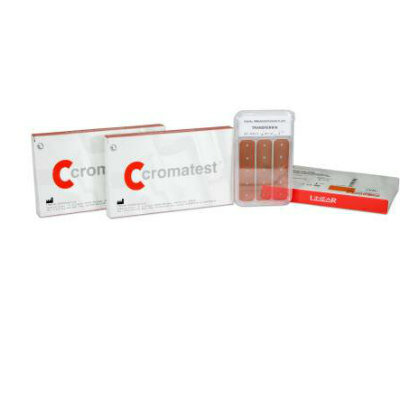Genome Editing Application Has Potential in Modifying Human Stem Cells
By LabMedica International staff writers
Posted on 13 Jan 2015
A unique genome editing tool known as CRISPR has been used by researchers for several years to fit, replace, disrupt, or add to sequences of an organism’s DNA. Now, scientists have shown that the system also precisely and effectively changes human stem cells, which could become a new advance in the use of stem cells for treatment and disease research.Posted on 13 Jan 2015
In an online article published November 24, 2014, in the journal Molecular Therapy, the Johns Hopkins University (JHU; Baltimore, MD, USA) scientists reported that the findings could simplify and speed efforts to engineer and customize human-induced pluripotent stem cells (iPSCs) for use as treatments or in the development of model systems to evaluate diseases and test drugs. “Stem cell technology is quickly advancing, and we think that the days when we can use iPSCs for human therapy aren’t that far away,” stated Zhaohui Ye, PhD, an instructor of medicine at the Johns Hopkins University School of Medicine. “This is one of the first studies to detail the use of CRISPR [clustered regularly interspaced short palindromic repeats] in human iPSCs, showcasing its potential in these cells.”
CRISPR was derived from a microbial immune system that contains DNA segments known as clustered regularly interspaced short palindromic repeats. The engineered editing system makes use of an enzyme that nicks together DNA with a snippet of small RNA that guides the tool to where researchers want to introduce cuts or other changes in the genome. Earlier studies have shown that CRISPR can generate genomic alterations or mutations through these interventions far more efficiently than other gene editing techniques, such as TALEN (transcription activator-like effector nuclease).
In spite of CRISPR’s advantages, a recent study suggested that it might also produce a large number of “off-target” effects in human cancer cell lines, specifically modification of genes that researchers did not mean to change. To see if this unwanted effect occurred in other human cell types, Ye; Linzhao Cheng, PhD, a professor of medicine and oncology in the Johns Hopkins University School of Medicine; and their colleagues pitted CRISPR against TALEN in human iPSCs, adult cells reprogrammed to perform similar to embryonic stem cells. Human iPSCs have already demonstrated huge potential for treating and studying disease.
The researchers compared the ability of both genome editing systems to either cut out pieces of known genes in iPSCs or cut out a piece of these genes and replace it with another. As model genes, the researchers used JAK2, a gene that when mutated causes a bone marrow disorder known as polycythemia vera; SERPINA1, a gene that when mutated causes alpha1-antitrypsin deficiency, an inherited disorder that may cause lung and liver disease; and AAVS1, a gene that has been recently found to be a “safe harbor” in the human genome for inserting foreign genes.
Their comparison found that when simply cutting out portions of genes, the CRISPR system was significantly more efficient than TALEN in all three gene systems, inducing up to 100 times more cuts. However, when using these genome editing tools for replacing portions of the genes, such as the disease-causing mutations in JAK2 and SERPINA1 genes, CRISPR and TALEN showed similar effectiveness in patient-derived iPSCs, the researchers reported.
In contrast to the human cancer cell line study’s findings, both CRISPR and TALEN had the same targeting specificity in human iPSCs, targeting only the genes they were designed to affect, according to the investigators. The researchers also found that the CRISPR system has an advantage over TALEN: it can be developed to target only the mutation-containing gene without affecting the healthy gene in patients, where just one copy of a gene is affected.
The findings, together with a related study that was published earlier in Cell Stem Cell, a journal of stem cell research, offer support that CRISPR will be a useful application for editing the genes of human iPSCs with little risk of unwanted effects, according to Drs. Ye and Cheng. “CRISPR-mediated genome editing opens the door to many genetic applications in biologically relevant cells that can lead to better understanding of and potential cures for human diseases,” concluded Dr. Cheng.
Related Links:
Johns Hopkins University













